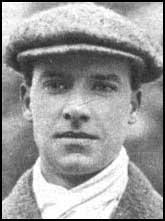Geoffrey De Havilland

Geoffrey De Havilland, the son of a clergyman, was born in Haslemere, Surrey, in 1882. As a young man he designed and built steam cars and motorcycles. With a £1,000 gift from his grandfather, De Havilland began work on his first plane in 1908. Completed in early 1910, its only flight took place at Crux Easton. With De Havilland at the controls, the plane crashed after flying only 100 feet. De Havilland continued with the project and his second aircraft, the FE-1, was purchased by the British War Office.
In 1911 De Havilland worked on a new plane for the Royal Aircraft Factory. The BE-2 flew for the first time in January, 1912. Soon afterwards, the BE-2 set a new British one-passenger altitude record of 10,560 feet (3,912 m). On the outbreak of the First World War, the BE-2 was the standard military aircraft employed by the Royal Flying Corps (RFC). The design of the plane was constantly being revised and during the war there were five different versions.
De Havilland's next aircraft was the Airco DH-2. Despite a lack of speed and an unreliable engine, the DH-2 was more manageable than German Fokker E- types and helped to establish allied air supremacy over Germany during the Battle of the Somme.
De Havilland designed the Airco DH-4 in 1916 as a single-engined bomber and was so impressive in trials that it went into immediate production. The first of these aircraft were delivered to the Royal Flying Corps in March 1917. The pilot sat beneath the centre of the wing, with the gunner behind. The Airco DH-4 was easy to fly, could travel at over 100 mph and had a high ceiling of 23,500 feet (7,163 m) and was considered the best single-engineered bomber of the First World War.
In 1920 he established the De Havilland Aircraft Company and produced a series of light transport aircraft and the Moth series of private planes, including the highly successful Tiger Moth. In 1934 De Havilland's Comet won the England to Australia air race.
On the outbreak of the Second World War, De Havilland the Mosquito fighter-bomber. The all-wood Mosquito was at first rejected by the Air Ministry, but went into service in September, 1941. Faster than the Spitfire, the Mosquito could out-fly virtually anything in the air.
Knighted in 1944, De Havilland designed and built the Comet in 1949, the world's first jet-driven airliner to enter commercial service. In 1961 De Havilland's company became part of the Hawker-Siddeley organisation. Geoffrey De Havilland died in 1965.
(
